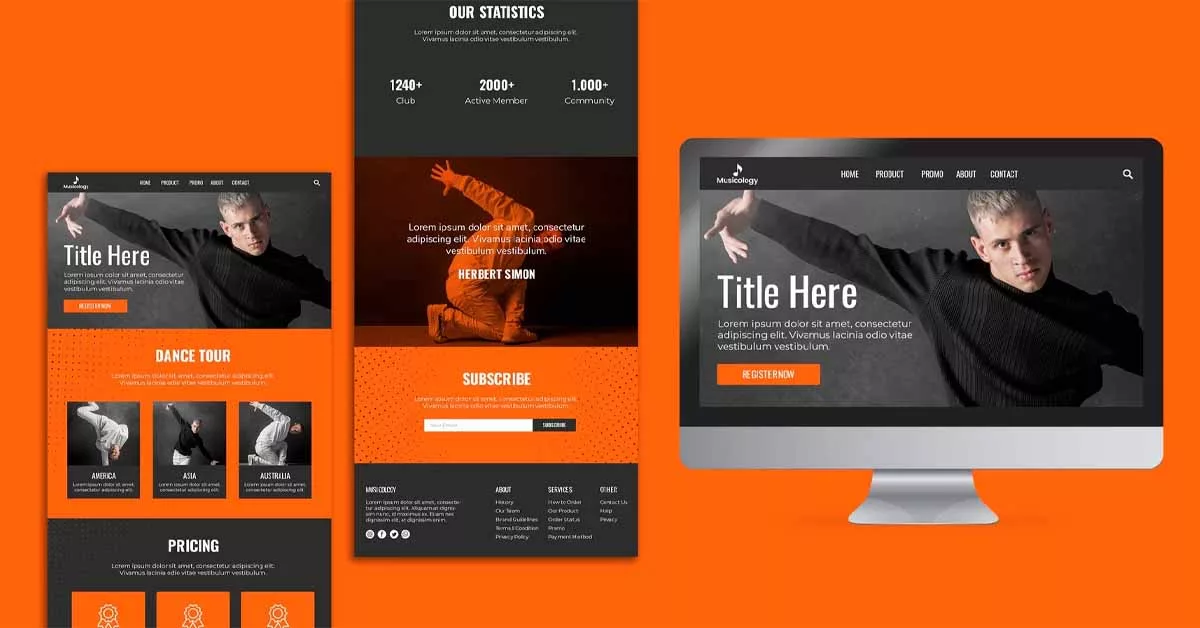In today’s competitive digital landscape, having a strong web design portfolio is essential for every aspiring web designer. A well-crafted portfolio not only showcases your skills and creativity but also acts as a powerful marketing tool to attract potential clients and employers. Whether you’re a seasoned professional or just starting in the field, this article will provide you with valuable tips and tricks to create a winning web design portfolio that stands out from the crowd.
1. Define Your Goals and Target Audience
Before diving into the creation of your portfolio, it’s important to define your goals and identify your target audience. Ask yourself questions like: What kind of clients or employers do you want to attract? What type of projects are you interested in? Understanding your goals and target audience will help you tailor your portfolio to meet their expectations and showcase the relevant work.
2. Showcase Your Best Work
When it comes to selecting work for your portfolio, quality always triumphs over quantity. Choose your best projects that highlight your skills, creativity, and versatility. Include a variety of projects that demonstrate your ability to design for different industries, platforms, and target audiences. Aim for a cohesive and diverse portfolio that showcases your range as a designer.
3. Tell a Story
A compelling narrative can make your portfolio more engaging and memorable. Don’t just display your work; tell the story behind each project. Describe the challenges you faced, your design process, and the solutions you implemented. Including this information will provide potential clients or employers with insights into your problem-solving skills and design thinking abilities.
4. Keep It Simple and User-Friendly
Your portfolio should be easy to navigate and visually appealing. Keep the design clean, minimal, and focused on showcasing your work. Use intuitive navigation and avoid cluttering the layout with unnecessary elements. Remember that your portfolio is a reflection of your design sensibilities, so ensure that it aligns with modern design trends and best practices.
5. Optimize for Different Devices
In today’s mobile-first world, it’s crucial to ensure that your portfolio is optimized for different devices and screen sizes. Make sure your portfolio is responsive and looks great on desktops, laptops, tablets, and smartphones. Test it on various devices to ensure a seamless user experience across all platforms.
6. Include Case Studies
Case studies provide an in-depth look into your design process and demonstrate your ability to solve complex problems. For each project in your portfolio, include a case study that outlines the objectives, challenges, and solutions. Include wireframes, mockups, and any other relevant documentation to showcase your design thinking and problem-solving skills.
7. Highlight Your Skills and Expertise
In addition to showcasing your work, highlight your specific skills and expertise. Include a dedicated section that lists your technical proficiencies, design tools you’re proficient in, and any additional skills that set you apart from the competition. This will help potential clients or employers understand your strengths and match them to their project requirements.
8. Incorporate Testimonials and Client Feedback
Client testimonials and feedback are powerful social proof that can instill confidence in potential clients or employers. Include testimonials from satisfied clients or employers, highlighting the positive impact your work had on their projects. This will enhance your credibility and trustworthiness, making it easier for potential clients to choose you.
9. Stay Up-to-Date
The web design industry is constantly evolving, and it’s important to stay up-to-date with the latest trends and technologies. Regularly update your portfolio with your latest projects, and remove outdated work. Keep an eye on current design trends, and adapt your portfolio accordingly to showcase your ability to create modern and relevant designs.
10. Show Your Personality
Your portfolio should reflect your personality and individual style as a designer. Use your portfolio as an opportunity to showcase your
creativity and unique perspective. Don’t be afraid to inject a bit of personality into your portfolio through the design, typography, color scheme, or copywriting. This will help you stand out and create a memorable impression.
Conclusion
Creating a winning web design portfolio requires careful planning, selection, and presentation of your best work. By defining your goals, showcasing your best projects, telling a compelling story, and optimizing for different devices, you can create a portfolio that captures the attention of potential clients or employers. Remember to stay up-to-date with the latest trends, highlight your skills and expertise, and infuse your portfolio with your unique personality. With these tips and tricks, you’ll be well on your way to creating a winning web design portfolio that sets you apart in the competitive web design industry.



